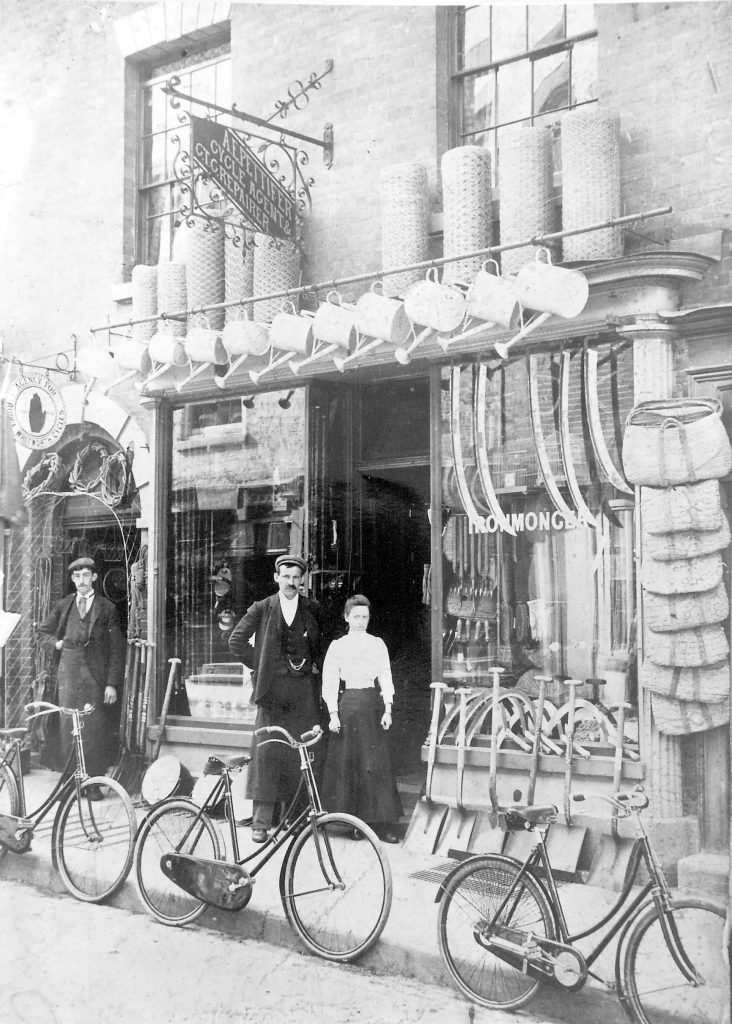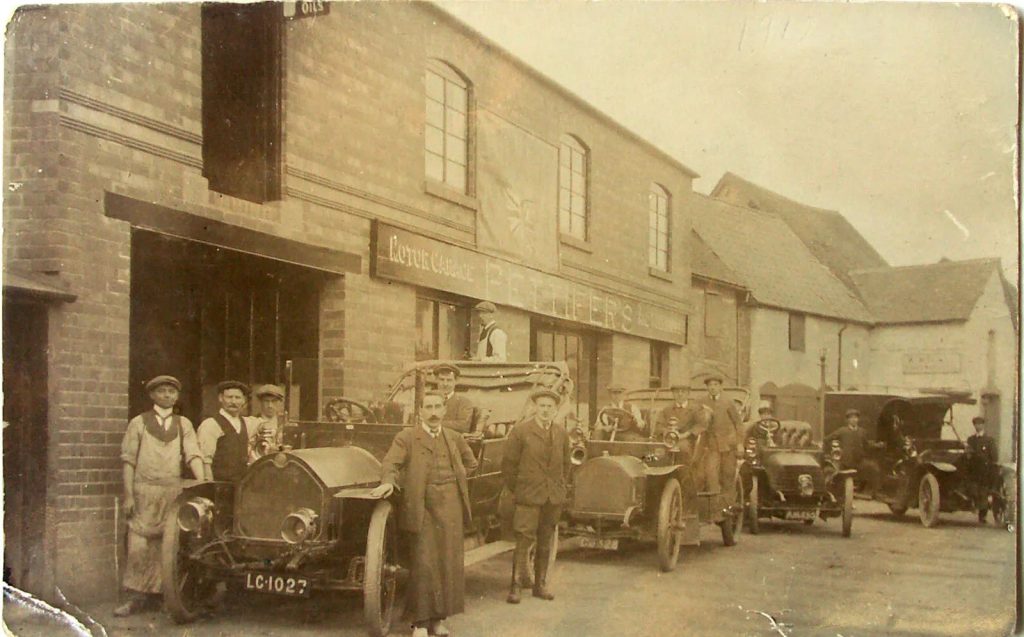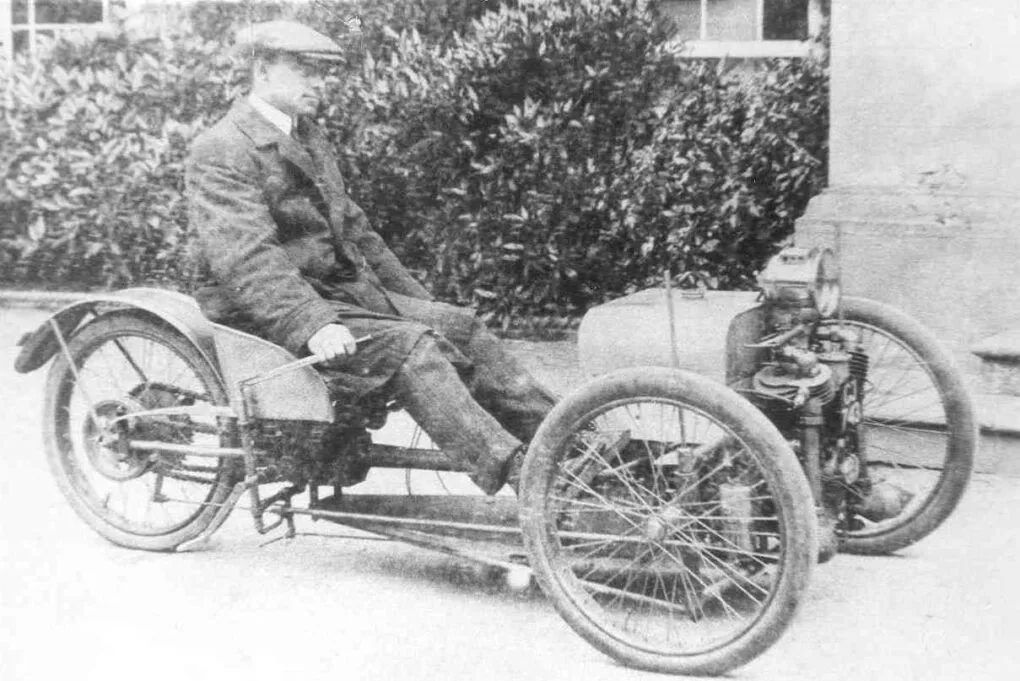By Hugh Langrishe.
This article first appeared in the 2010 society Journal.
The Rev. Prebendary Henry George Morgan was a keen motorist owning several motor cars before 1910. They were serviced and repaired by A&E Pettifer in their Rowberry Street garage, as were the early cars of his son Henry Frederick Stanley Morgan also known as Harry Morgan or HFS. Albert Pettifer was a keen motorist and one of 35 drivers to tackle the first Shelsley Walsh Hill Climb in 1905. HFS also gained a taste of competitive motoring when he entered the Shelsley Walsh Hill Climb on 13 July 1907. He also competed in the 1906 Fromes Hill, hill climb.
It was not until 1910, approximately five years after Pettifer’s new garage was built replacing the old one which had burnt down, that Mr. Pettifer was commissioned to build the first body and chassis for HFS’s final prototype single-seater three wheeler “Runabout”. This was the final development of the first car to be fitted with a Peugeot Vee-twin engine.
The 1910 car was shown at the 1910 Olympia Motor Show. It attracted much favourable comment but few orders. Those that were built were bodied by Pettifer. For the 1911 Motor Show the car was re-bodied as a two seater, again by Pettifer, and attracted many orders.
HFS accepted an offer by Harrods for an exclusive agency which lasted for about a year although there were at least two other agencies. All chassis were delivered to London and Harrods arranged all body building. By August 1912 construction of bodies for the Morgan Runabout ceased in Bromyard as distance from Malvern and increasing demand for the car was beyond the ability of Albert Pettifer to provide successfully. Instead HFS used the resources of William Clare Coach Builders, ½ mile from the Morgan Co. Works.
The panels for Pettifer bodies were shaped in his tinsmith’s shop which occupied the upper floor of the small detached building in Tin Pan Alley, between Broad and Rowberry streets. They were assembled on the chassis in the garage. The wooden patterns for the body patterns were cut in the upper floor of the building across the yard. In those early years of the motor car, manufacturers did not build their own bodies and supplied the chassis “bare”. It is possible that Pettifer used his experience from building the Morgan bodies to offer a body-building service to other car owners in the area.
Connection between HFS/Malvern College/Pettifers/Stoke Lacy and the Morgan Prototype
HFS was also a keen cyclist and would cycle from Malvern to Stoke Lacy. He tried a motor cycle but after a short while turned his thoughts to a ‘cyclecar’ which would be light and flexible to accommodate hills and poor roads around the area. In Malvern, his friend was William J. Stephenson-Peach, engineering master at Malvern College. HFS was an engineer but his true talent lay in his ability to merge the best features of contemporary design to create the simplest yet most efficient vehicle of its type adding his own additions like independent suspension, better weight distribution and reduced weight in the braised chassis. Items were
bought from local suppliers and the body framework was made of wood in the carpenter’s shop. The 3-wheel prototype was tested on his frequent visits to his family in Stoke Lacy during 1909 and the stables would have been used also as temporary workshop as modifications were made en route. Finally the crude model was entrusted to A.E. Pettifer of Bromyard where his workmen’s expert skills could produce high quality brazing to create the supports, chassis and body parts in his tinsmith’s shop and garage on Rowberry Street.
Hugh Langrishe 2010



